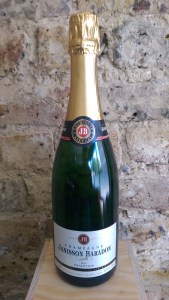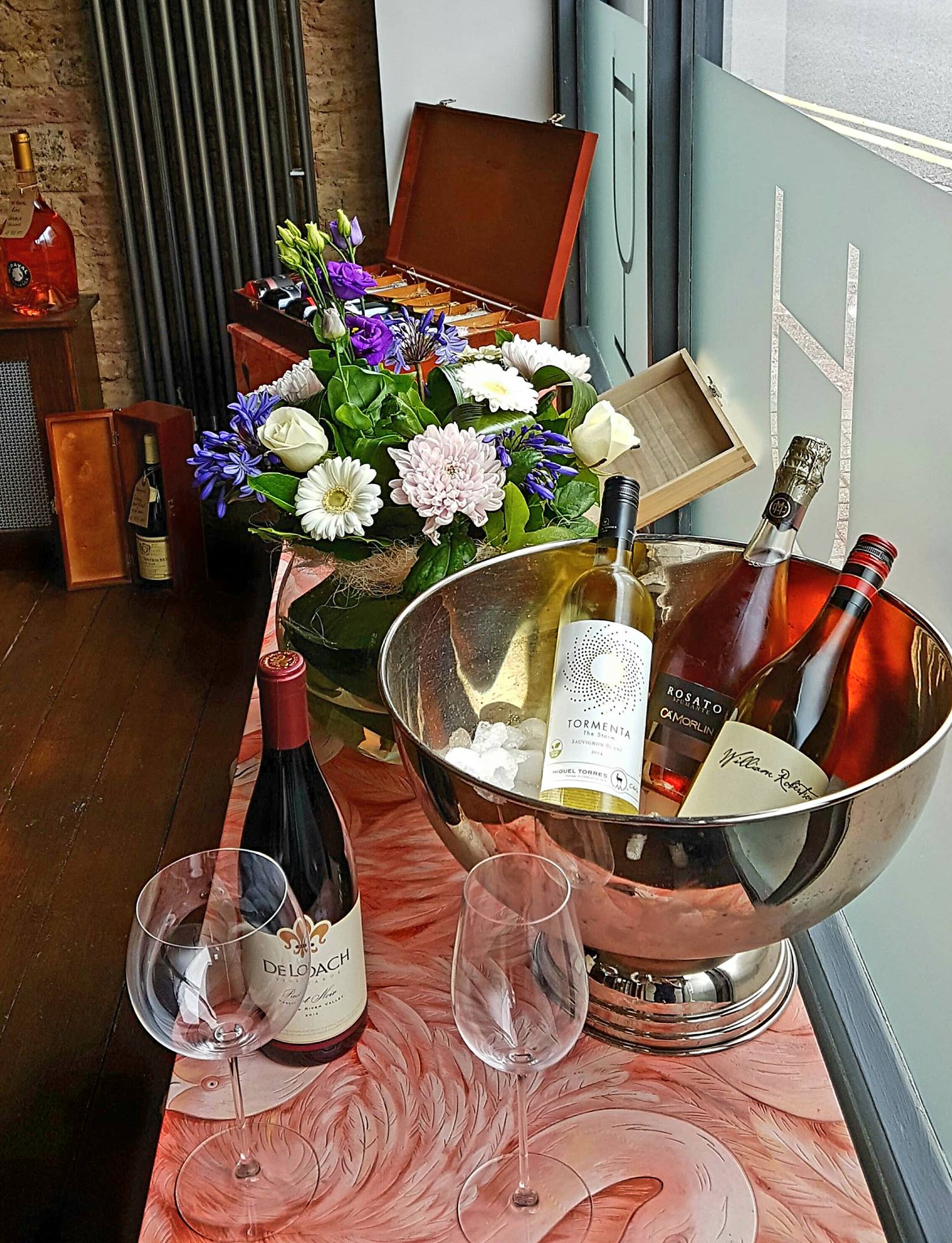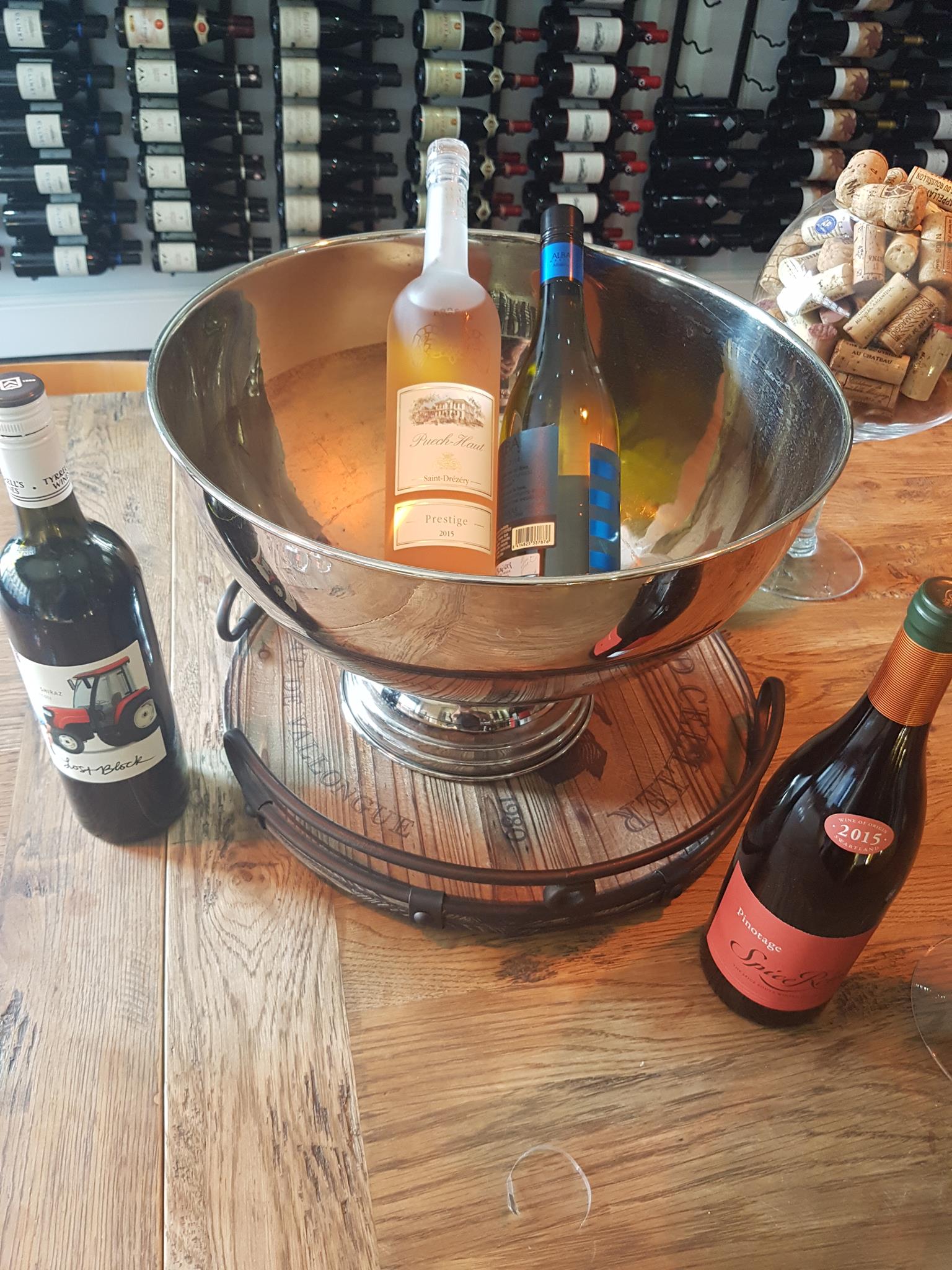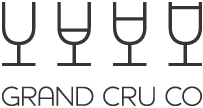- Details
- Written by Henry Conway
- Category: News
- Hits: 1509
Today, we see the start of our monthly website raffle!
Any order placed via our website will be entered to win a bottle of our house champagne worth £18.95! With free delivery for the immediate 5 miles of the shop and £9.95 from there onward, you have nothing to lose! Plus, multiple entries are allowed so make as many as you'd like for more chances to win!

The winner will be announced on our social media pages so keep your eyes peeled!
- Details
- Written by Henry Conway
- Category: News
- Hits: 1557
French Wine Militants attack Winery
A masked gang of militants claiming allegiance to the shadowy French winemaker group CRAV have attacked one of southern France's biggest wine companies, smashing windows and setting fire to offices in protest at 'cheap wine imports'.
Tensions in Languedoc-Roussillon reached a peak on the evening of 19 July when 30 militants attacked Sudvin, a subsidiary of co-operative producer and merchant Vinadeis, in Maureilhan near Béziers.
Balaclava-clad protesters wielding crowbars and what appeared to be makeshift axes stormed the offices.
While some activists were breaking windows, cabinets, furniture and computer equipment, others set fire to tires in several offices. The tanks were also targeted, but were empty. Video footage of the attack obtained by France 3 shows the attackers smashing their way into the Vinadeis offices, before vandalising rooms indiscriminately and then starting a fire that appears to quickly spread.
The attackers claimed allegiance to Languedoc-Roussillon’s Comité Régionale d’Action Viticole (CRAV), a shadowy group of winemakers that has existed for more than 50 years and intermittently used violence to pursue its goals.
Divers Find 300 Year old Cheese
A Roquefort style cheese that has been maturing on the seabed since the 17th century has been found by divers who were alerted by its pungent smell.
Divers found the shipwrecked cheese while searching the 340-year-old carcass of a Swedish warship in the Baltic Sea, off the island of Öland.
Researcher Lars Einarsson, of the Kalmar County Museum, told Swedish newspaper The Local that the cheese looked like a granular Roquefort.
Shipwrecked Champagne has previously been found in the area, which was a key trading route from Europe to Russia.
Einarsson said the shipwrecked cheese was reasonably well preserved after lying in mud on the seabed.
He said it smelled strongly of cheese and yeast, but added that he didn’t want to taste it.
Groot Constantia Reunited with Worlds Oldest Bottle of Wine
South African winery Groot Constantia has bought back one of its oldest bottles of wine still in existence, after learning about it being auctioned from a Decanter.com article.
Records show that Groot Constantia’s Grand Constance wine was enjoyed by French emperor Napoleon during his exile on St Helena.
In a rare sale, a bottle of Grand Constance 1821 was auctioned online by Catawiki last week.
Groot Constantia entered the auction and ended up securing the winning bid, of £1,318.
Boela Gerber, winemaker at Groot Constantia, said, ‘We were not aware of the auction until we read about it on Decanter.com.’
‘We are happy to report that our bid was successful, [and] the bottle of 1821 Grand Constance is coming home.’
Fewer than 12 bottles of the 1821 Grand Constance have been preserved around the world, it is believed.
Groot Constantia is one of the oldest wine estates in South Africa, having produced wine for more than 325 years.
Napoleon and his entourage ordered 30 bottles of Grand Constance per month on St Helena, according to records.
- Details
- Written by Henry Conway
- Category: News
- Hits: 1548
Good afternoon wine lovers !
As always, even this week we are about to recomend some of our best choices.
So, we’ve chosen the wines we would most like to have in our glass during the season of holidays and sun (hopefully !).

For whites, the emphasis is on crisp, unoaked wines from Sauvignon blanc to Chenin blanc, whose flavours of herbs, citrus and meadows seem to express the feeling of being outside on a warm day.
Tormenta Organic Sauvignon blanc 2014 : a wine of massive aromatic intensity and character, this Chilean Sauvignon blanc is exploding with tropical notes such as passion fruit and mango accompanied by citric and woolly hints.
Just for £8,95
William Robertsion Chenin blanc 2015 : Like fruit? This one tastes like most of them! Brilliantly refreshing with cascades of pineapple, lemon and golden apple combine with bright acidity for a truly refreshing tipple!
Just for £9,25
For sure we couldn't miss a rosé as well as a sparkling … that's why we suggest you to try this italian rosato spumante.
Cà Morlin Spumante rosato : This fully sparkling spumante is a brilliant coral pink colour. It is soft and fragrant, with perfumes of strawberries and a long lasting mousse. Exactly what you need for your summer dinner parties !
Just for £12,95
Light and slighlty chilled reds are also a perfect alternative to what we've just looked at.
The chill (20-30 minutes in the fridge is enough) gives the wine a pert edge while its structure and gentle tannins are comforting. Today we suggest you try
De Loach vineyards Pinot noir Russian river Valley 2012 :
Silky on the palate, the wine offers flavours of strawberry, rhubarb, clove and plum. It is well balanced with moderate tannins and bright acidity. Crafted using traditional Burgundian techniques, the grapes were hand-sorted then fermented in small vats with all punch-downs done by hand. The wine was aged for 11 months in 16% new French oak barrels to create a complex, multi-layered Pinot Noir.
At just £18,95
You'll find everything discouted by the 10% ! Come and try them at our shop or order them online atwww.grandcruco.com
Cheers !!!
- Details
- Written by Henry Conway
- Category: News
- Hits: 1479
How about some wines of the week? This week are selection is as follows:
Spice Route Pinotage 2015 from South Africa
Puech-Haut Rose 2015 from Languedoc
Lost Block Shiraz 2013 from Australia
Albarino 2014 from Spain

Come on down for a 10% discount on any of these this week! They all compliment the sun perfectly so drink up!
- Details
- Written by Henry Conway
- Category: News
- Hits: 1720
Police hunt for $5m of missing Aussie Wines
A collection of some of Australia's greatest wines worth an estimated five million dollars has gone missing in the country.
Police in the Hunter region have appealed to the public for information after failing to find the A$5m stash of missing Australian wines. Full details of the wines were not released, but police said the haul was made up of dozens of individual wine collections. Bottles include some of Australia’s best-known wine names, such as Penfolds Grange and Henschke.
Police said the wines were being held by Wine Investment Services Pty Ltd until 2013, when the firm collapsed into receivership. Some of the firm’s assets were seized, but ‘inquiries revealed a number of wine collections were not surrendered’, police said. In March 2016, detectives from the State Crime Command’s Fraud and Cybercrime Squad launched an operation named ‘Strike Force Farrington’ to investigate the missing wine. Officers raided a warehouse in Newcastle on 31 May and seized documents and electronic devices, police said.
‘As investigations continue, detectives are appealing for assistance from the public to locate the wine collections.’ Police added, ‘In particular, they would like to speak with anyone who may have purchased, or has been approached to purchase, collectable or vintage wines, including Penfolds Grange, varieties of Henschke, Torbreck, and Chris Ringland/Three Rivers.’
Heavy hail ravages Beaujolais
Local officials have called for parts of Beaujolais to be declared a disaster zone after fierce hail storms severely damaged several vineards in the area.
Only one month after a first episode of hail, northern Beaujolais was hit by another violent hail storm and lot of rain on the evening of Friday 24 June. Mélina Condy, from regional wine body Inter-Beaujolais, said ‘3,000 hectares or 20% of the vineyard’ was at least partially damaged. Effects are feared worse than last month’s storm, because of violent winds and 80mm of rain accompanying the hail.
The crus of Beaujolais, the best part of Beaujolais, are situated in the north.
Fleurie, one of them, is believed to have suffered most. ‘70% to 80% of the vineyards are totally destroyed by the hail,’ said Frédéric Miguet, mayor of Fleurie. There was also a landslide that has spread soil on the roads and potentially disrupted vineyard terroirs. Moulin-à-Vent was hit hard, too. Thibault Liger-Belair, the biodynamic winemaker, estimated that he lost 75% of his 2016 harvest.
He sprayed valerian and arnica just after the hail and said that he hoped the pruning system used in Beaujolais (a short pruning) to lessen the impact on 2017. Others crus hit by this violent hailstorm included Morgon, although the Côte de Py was only moderately affected overall. All vineyards in Chiroubles have now been damaged by hail in the past month, at least to some extent.
Chablis Price rise after Bad Weather
Wine lovers will be paying more for Chablis in the next couple of years, after bad weather has already cut the 2016 harvest by as much as 50%, according to one expert.
There will be a major Chablis shortfall following what will be one of the Chardonnay-producing region’s most reduced harvests in living memory, according to Louis Moreau, owner of the highly regarded eponymous domaine and vice president of the Chablis Commission at the Burgundy wine bureau (BIVB). Speaking at a ‘Pure Chablis’ lunch at Le Manoir aux Quat’ Saisons in Oxfordshire on Friday (1 July), Moreau said that the Chablis 2016 vintage will be up to 50% smaller than average.
It is difficult to quantify the subsequent supply deficit, but it seems inevitable that prices will rise, he said. ‘There’s no question that 2016 has been difficult and challenging so far with frost, rain, hail and mildew. I can’t recall a vintage like it. Certainly, we have seen nothing like it in the last 40-50 years.’ Moreau added, ‘I hope we have a good vintage from now until October. But whatever happens it can’t undo what has already occurred. Last month, in June, we had the equivalent of six months rain.’ This came hard on the heels of a massive hailstorm on 13 May which hit 400 hectares of vineyards in Chablis. ‘Fortunately, 2015 and 2014 provided good quantity and good quality so we have reasonably healthy stock levels.
‘But with just 20m bottles from 2016, things are going to be very, very tough and it will have an inevitable impact on prices.
‘There’s no question that there will be a ‘gestion de crise’ [crisis strategy], which will require us to manage our existing stocks very carefully to spread them out over the next two years.’
Professor invents Infinite wine Machine
An American professor has developed a miniature machine capable of continuously producing wine.
Professor Daniel Attinger is now working with a team of scientists at Ecole Polytechnique Federal de Lausanne in Switzerland to develop the non-stop wine machine. His ‘micro winery on a chip’ is capable of continuously producing wine at a rate of one millilitre per hour, according to the university. But, Attinger’s miniature device isn’t intended for home use.
It is being developed to help winemakers control fermentation in the cellar. ‘Let’s say a winemaker in the Lavaux region of Switzerland finds that a certain type of yeast or a certain fermentation temperature leads to an overly bitter wine,’ said Attinger. ‘We could quickly test alternatives.’ Inspiration for the device came from concerns about how winemakers will deal with climate change, said Attinger, who is a wine-loving professor at Iowa State University in the US and a specialist in multi-phase micro-fluidics.
‘Climate change is having an impact on the quality of grape crops around the world,’ he said. ‘Due to the heat, some crops ripen too quickly, the harvest takes place sooner and the wines end up with a higher alcohol content or a different taste. We need to find ways to analyse and adapt how the wine is made.’
- Details
- Written by Henry Conway
- Category: News
- Hits: 1916
Burgundy merchant raided over wine fraud
Maison Béjot Vins et Terroirs' CEO has resigned after a raid by customs officers in April following suspicions that fraudulent Burgundy wines were being produced.
In April, the French media reported that the Burgundy negociant Maison Béjot was being investigated on suspicion of mixing Burgundy wines with those of other French AOCs; a practice which is strictly forbidden under French law.
The alleged wrong-doing at Maison Béjot Vins et Terroirs immediately sent shockwaves through the region.
At the time of the allegation CEO Vincent Sauvestre protested his innocence and invited custom officers to view Maison Béjot’s production facilities with the firm’s technical director.
Last week Thomas Gueller of wine industry newsletter V&S News reported that Sauvestre, who is also a shareholder in the business, has now resigned from Maison Béjot Vins et Terroirs. V&S News also stated Sauvestre has been replaced by a business consultant, Eloi Delorme, a new name to the wine business in Burgundy.
Meanwhile, it has been reported that the BIVB (Bureau Interprofessionnel des Vins de Bourgogne) has begun legal proceedings against the company.
That hasn’t prevented two wine companies – Invivo Wine and Advini – from coming forward as potential buyers of the business. According to Gueller, Maison Béjot Vins et Terroirs has experienced strong growth in recent years which he says explains their interest.
Maison Béjot Vins et Terroirs owns several brands and vineyards in Burgundy, including Chartron et Trébuchet, Pierre André, Reine Pédauque, Moillard, and Domaine du Chapitre in Beaujolais.
What will Brexit mean for fine wine?
Fine wine prices could rise ‘across the board’ if the UK votes to leave the European Union later this month, according to one leading wine merchant.
Gary Boom, managing director of BI, said he was wary of making bold predictions given the unprecedented nature of the Brexit vote, but added: ‘We can say that the uncertainty associated with a leave vote would likely result in further volatility, which is generally unwelcome for any market.
‘[Sterling] has been weakening [against the euro] in the lead-up to the vote and it seems probable that it would continue to fall if we vote leave; this would result in price rises across the board as the cost of replacement stock would immediately rise.’
However, the picture for an international business such as BI is complex: sterling’s weakness has boosted the purchasing power of non-UK markets, said Boom.
‘In essence, it’s been cheaper for our Asia/US/EU customers to buy from the UK than elsewhere. With a remain vote, we would expect a reversal of this as GBP strengthens.’
‘In contrast, a leave vote would see an acceleration of higher prices for replacement stock as GBP would likely fall markedly. That said, if the economic community are to be believed, a leave vote would be accompanied by a material negative macro shock that would do no favours to both local and regional economic activity.’
Mike Laing, managing director of Armit, said the uncertainty regarding Brexit was ‘certainly not helping’ the 2015 Bordeaux en primeur campaign, adding: ‘I am sure there are plenty of customers who are happy to take the risk of waiting to see where things settle post-Brexit before committing funds.’
However, Boom said there was no suggestion that BI’s customers were planning to wait until after 23 June to make en primeur purchases.
Merchants are somewhat less fearful of trade barriers being erected in the event of a vote to leave the EU, with Boom claiming it was ‘unlikely’ that European wine-producing countries would impose additional tariffs, given the significance of the UK market.
Will Hargrove, head of fine wine at Corney & Barrow, said he had no real short-term fears. ‘Things will have to continue – it can’t change overnight,’ he said. ‘In the longer term, we will have to see. The UK has the good position of being a strong market for almost all European wine producers.’
What makes the wines of Etna so special?
What makes the wines of Etna so special? A combination of three factors, said D’Agata: Alpine climate in a Mediterranean land, the volcanic soils and the predominance of ungrafted, pre-phylloxera vines.
‘Fifteen years ago, the room would have been empty,’ remarked Ian D’Agata, as he opened this hotly anticipated tasting of 11 reds from one of Italy’s most exciting wine regions. The turnout at this year’s Italy Fine Wine Encounter, he continued, was testament to how far Italian wine has come.
Sicily is a behemoth in the wine-producing world, producing more wine than Australia, and with more vines planted than both Chile and Bordeaux combined. The crowd-pleasing Nero d’Avola grape accounts for most red plantings, found everywhere on the island except in Etna on the island’s northeastern shores, where the far more thrilling Nerello Mascalese produces reds of high tannins and little colour. A dash of Nerello Cappucio often finds its way into Etna reds, D’Agata explained, the perfect complement since it has lower tannins and higher colour.
The usual blend is around 90% to 95% Nerello Mascalese and 5% to 10% Nerello Cappuccio – producers would use more, but plantings are few and far between. Indeed, there’s a scramble to plant more. For the same reason there are only three monovarietal Nerello Cappuccio wines made in Etna, compared to many more 100% Nerello Mascaleses.
What makes the wines of Etna so special? A combination of three factors, said D’Agata:
The fact that you have an Alpine climate in a Mediterranean land, leading to huge day-night temperature drops that give great aromatics to the wines
The volcanic soils, featuring strata of different geologic origins and including no fewer than 46 different lava types
The predominance of ungrafted, pre-phylloxera vines




